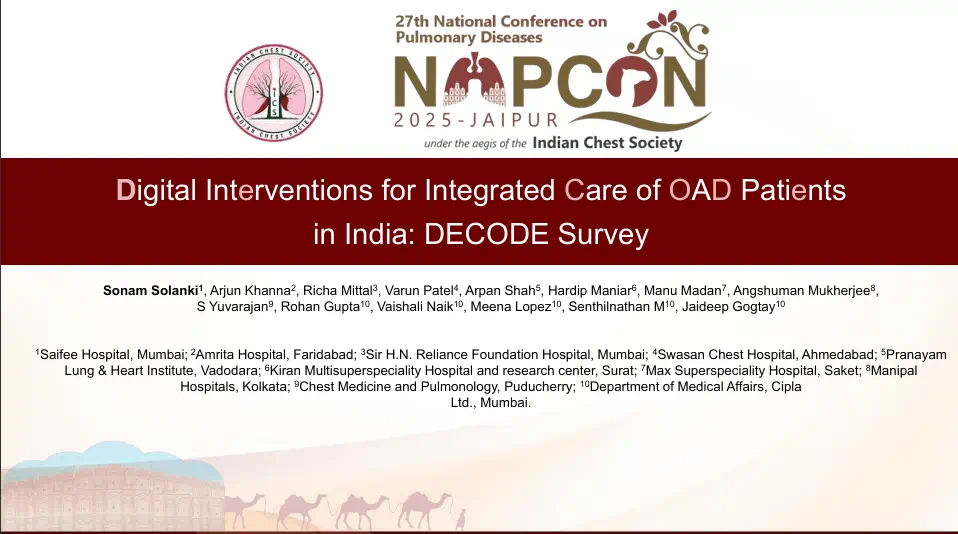ERS 2024: The Global Burden of Disease 2021 of Respiratory Disease Methods and Results on Asthma, Chronic Obstructive Pulmonary Disease, and Others
Speaker: Theo Vos
The Global Burden of Diseases (GBD) is a comprehensive global public good encompassing many diseases. According to the GBD 2021 results, chronic obstructive pulmonary disease (COPD) emerged as the leading contributor to the global disease burden, followed by asthma. Together, these conditions accounted for 3.8% of the total disability-adjusted life years (DALYs) lost in 2021. In addition to COPD and asthma, other respiratory conditions, including COVID-19, lung cancer, and various diseases, also contribute significantly to this burden. COPD, in particular, shows a marked increase with age and has the highest mortality rate among individuals aged 80 to 84 years. Across the seven global regions, COPD remains the dominant contributor to respiratory-related deaths. However, asthma also imposes a significant burden, particularly in low- and middle-income countries, where mortality rates are higher. This burden is further exacerbated in South Asia, Southeast Asia, East Asia, and Oceania.
In terms of nonfatal health loss, measured as years lived with disability (YLD), the burden of chronic respiratory diseases shows a steep age-related rise for COPD. Asthma, however, begins contributing significantly to health loss in childhood, making it the dominant cause of YLD from chronic respiratory diseases in pediatric populations. A global map illustrated the distribution of chronic respiratory diseases, including subnational estimates for larger countries. The highest burden is concentrated in South Asia and the island of New Guinea. One major contributing factor to this regional burden is exposure to air pollution. Recent forecasts from the period 1990 to 2021, extending to 2050, show a significant projected increase in deaths, prevalence, incidence, and DALYs for COPD. However, age-standardized rates reveal a more modest trend, with a projected decline in COPD-related deaths and stable prevalence and incidence rates, as well as YLD, which suggests that the aging population, rather than new cases, is a key driver of the rising burden over time. These forecasts are available for every country and serve as a valuable resource for future projections. They enable scenario-based modeling, such as evaluating the potential health gains from reducing air pollution or eliminating tobacco use over the next decade. The approach provides more policy-relevant insights compared to the traditional cross-sectional global burden of disease data.
The risk factors for COPD and asthma are primarily linked to particulate matter and outdoor and indoor air pollution. Upon re-evaluation of risk curves for each risk factor and disease outcome, it was found that the impact of air pollution had been underestimated. While asthma contributes a smaller proportion, its risk factors include body mass index (BMI), occupational exposures, genetic predisposition, and smoking. Despite these specific factors for asthma, the overall risk burden for both COPD and asthma remains significant, contributing to 28% of the total risk attribute. The estimates for deaths related to COPD and asthma are primarily derived from vital registration data, while prevalence data is obtained through systematic surveys and data collection efforts worldwide. Conditions such as pneumoconiosis, interstitial lung disease, and pulmonary sarcoidosis pose challenges in obtaining reliable data, and reliance is placed on inpatient and medical claims data. Placeholder estimates are used for other chronic respiratory diseases based on the ratio of the non-fatal and fatal outcomes. A substantial effort has been made to adjust the measurement bias from different data sources using varying case definitions. These adjustments ensure alignment with a chosen reference case definition, allowing for incorporating as many data sources as possible. Covariates for estimating deaths from chronic respiratory diseases, including COPD, are selected through an automated analytical strategy. This approach optimizes the combination of covariates, improving predictive validity. A scaler known as the Summary Exposure Value (SEV) measures the normalized combined impact of all risk factors estimated by the GBD study. Additionally, other factors such as cigarette consumption, elevation over 1500 meters, and outdoor air pollution are included. Further considerations include smoking prevalence, indoor air pollution, health access, quality indices, and more distal factors like the Socio-demographic Index (SDI), lagged Gross Domestic Product (GDP) per capita, and education levels. Specifically for pneumoconiosis, estimates are based on asbestosis, coal consumption, and coal production data for relevant disease subtypes.
The study examined predictive covariates and geographical similarity to estimate nonfatal mortality rates for chronic respiratory diseases. Utilizing a highly automated and advanced tool, it provides accurate death modeling based on out-of-sample predictive validity, covering data from regions lacking vital registration systems. For chronic respiratory diseases, verbal autopsies are employed, but these are limited in their ability to differentiate between specific conditions due to lack of specificity. The tool "Dismod" generates internally consistent estimates of prevalence, incidence, remission, and mortality risk for nonfatal conditions. The study leverages predictive covariates and geographical proximity, running a cascade model that begins with global-level estimates and then refines them down to super-regions and subnational areas, improving the precision of the forecast. One challenge highlighted is the measurement of disease severity, particularly for COPD. Based on physiological and pathological lung function assessments, epidemiological data are used to stratify spirometry findings into Global Initiative for Chronic Obstructive Lung Disease (GOLD) classes. These are compared with severity information from U.S.-based Medical Expenditure Panel Surveys (MEPS), which classify COPD into mild, moderate, and severe states. An alternative approach has also been explored, using survey responses that match descriptions of uncontrolled, partially controlled, and controlled asthma health states. This method can be applied globally using large survey series such as the International Study of Asthma and Allergies in Childhood (ISAAC) and the Global Asthma Network (GAN). In GOLD Class 1, many individuals are asymptomatic and considered at risk of developing more severe complications in the future. However, they are not currently symptomatic, with classifications for COPD severity largely based on the Medical Research Council (MRC) Dyspnoea scale.
A current update on the GBD estimates highlights that final figures are expected by the end of this month, with publication targeted before the end of the year. There has been an expanded collaboration, particularly focusing on chronic respiratory diseases, and efforts to engage with more stakeholders are ongoing. The GBD encourages those interested in the epidemiological aspects of these diseases to get involved. Specifically, the study on interstitial lung disease yielded modest new findings, whereas asthma research saw a significant update with 225 new data sources covering 90 GBD regions that previously had no information. This represents a major enrichment of the model, thanks to the extensive work of initiatives like ISAAC and GAN. A key challenge remains the need for more robust data. The estimates rely heavily on the quantity and quality of available data, which is currently sparse for diseases such as pneumoconiosis and interstitial lung disease. This leads to greater uncertainty in estimates compared to better-supported conditions like COPD and asthma. Systematic data collection is critical for further improvement, particularly for measuring disease severity. For example, the MRC Dyspnoea scale could be integrated into COPD surveys, aligning well with disability weight health states. In the U.S., disease control (controlled, partially controlled, or uncontrolled) data has also been explored to improve classification. There are additional gaps in the GBD coverage, particularly for conditions like sleep apnea, bronchiectasis, and cystic fibrosis. Although funding for the GBD is substantial, there are limitations on expanding the number of causes studied, which would require additional resources. Notably, sleep apnea is an important addition, as its nonfatal nature means it isn't adequately represented by the current placeholder for "other chronic respiratory diseases." Discussions with experts have also pointed out the need to separate idiopathic pulmonary fibrosis from sarcoidosis in the model, though this would again require more data and funding.
European Respiratory Society Congress (ERS) 2024, 7–11 September, Vienna, Austria.



